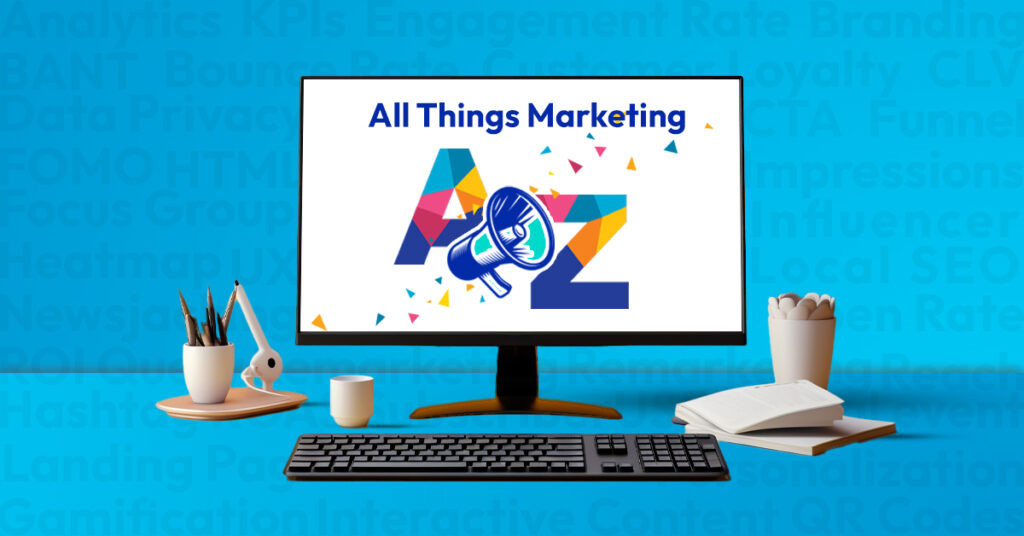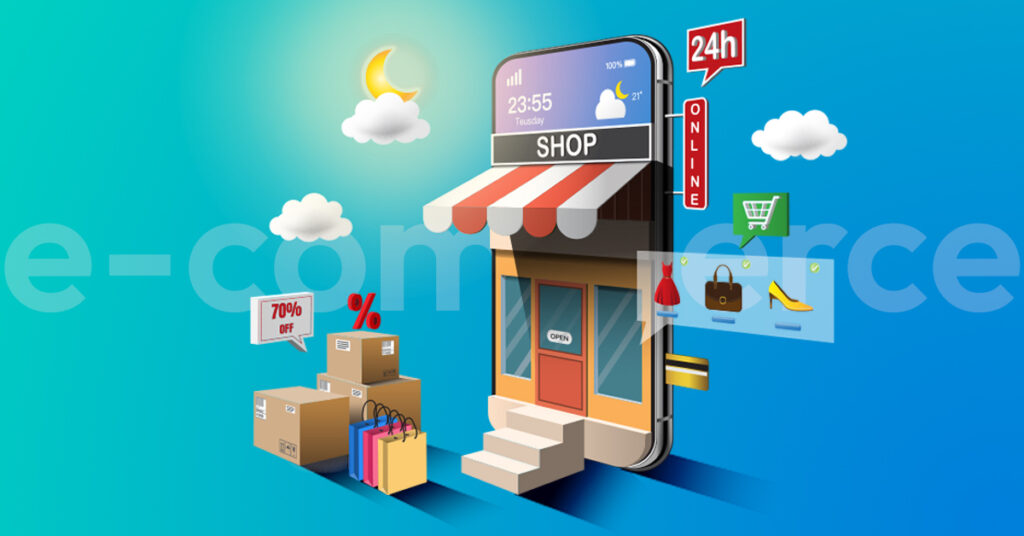Marketing & Growth are ever evolving roles. With the growing digital landscape and changing customer behavior the key responsibilities for a manager are changing and how. There is our humble attempt to create an ever growing bank of all important keywords….. Just for you!
- Analytics: The process of collecting and analyzing data from various marketing channels to gain insights about/on customer behaviour, campaign performance, and overall business performance. Track using the below metrics.
- Key Performance Indicators (KPIs): Metrics such as Conversion Rate, Click-Through Rate (CTR), Bounce Rate, Return on Investment (ROI), and Customer Lifetime Value (CLV).
- Data Analysis: Techniques like Descriptive Analytics, Predictive Analytics, and Prescriptive Analytics are used to derive insights from data.
- A/B Testing: A method of comparing two versions of a webpage or marketing campaign to determine which one performs better in terms of engagement or conversion rate. Here are some formulas.
- Conversion Rate: (Number of Conversions / Number of Visitors) * 100%
- Click-Through Rate (CTR): (Number of Clicks / Number of Visitors) * 100%
- Engagement Rate: (Number of Engagements / Number of Visitors) * 100%
- Bounce Rate: (Number of Single-page Visits / Total Visits) * 100%
- Audience Segmentation: Dividing target audience into smaller, distinct groups based on specific criteria like demographics, behaviour, or preferences to deliver more personalized marketing messages. Key notes to understand this better:
- Customer Segments: Audience is divided into segments based on demographics (age, gender, location), behaviour (past purchase behaviour, engagement), or preferences (interests, hobbies).
- Personalization Metrics: Metrics like Personalization Conversion Rate, Personalization Lift, or Personalization Effectiveness are used to measure the success of personalized marketing messages.
- Attribution Model: A method of assigning credit to different marketing touchpoints that contributed to a conversion or sale, and helping understand the effectiveness of each marketing channel. There are 4 types of attributions.
- First Touch Attribution: Gives credit to the first marketing touchpoint that introduced the customer to the brand.
- Last Touch Attribution: Gives credit to the last marketing touchpoint that led to a conversion or sale.
- Multi-Touch Attribution: Assigns credit to multiple touchpoints in the customer journey based on their contributions.
- Linear Attribution: Distributing credit evenly across all touchpoints in the customer journey.
- Time Decay Attribution: Giving more credit to touchpoints closer to the conversion event.
- Affiliate Marketing: A performance-based marketing strategy where affiliates earn a commission for driving traffic or sales to a company’s products or services.
- Conversion Rate: (Number of Conversions from Affiliate / Number of Visitors from Affiliate) * 100%
- Affiliate Earnings: Total earnings = (Number of Conversions from Affiliate * Commission per Conversion)
- Branding: The process of developing a unique identity for a product or company, including the logo, name, design, and messaging, to create a memorable and recognizable brand.
- Buyer Persona: A fictional representation of an ideal customer based on research and data, used to guide marketing strategies and content creation.
- Bounce Rate: The percentage of visitors who leave a website after viewing only one page, indicating the lack of engagement or relevance of the content.
The formula to calculate Bounce Rate = (Number of Single-page Visits / Total Visits) * 100% - Backlinks: Referred to as inbound or external links, are hyperlinks present on one website that direct users to another website. Backlinks serve as indications of trust and credibility for search engines such as Google. When one website includes a link to another, it implies that the linked-to content is valuable, authoritative, or relevant. Backlinks play a crucial role in SEO and influence a site’s search engine ranking and visibility.
- Behavioural Marketing: Using data on customer behaviour, such as browsing history or previous purchases, to deliver targeted and relevant marketing messages.
- Breadcrumbs: A navigational aid that shows the hierarchical path of a user’s journey on a website, making it easier for users to backtrack and find their way to previous pages.
- Budget, Authority, Need, Time (BANT): A lead qualification framework used by sales and marketing teams to assess the viability of a lead. It stands for:
- Budget: Does the prospect have the financial resources to make a purchase?
- Authority: Is the prospect a decision-maker or someone with purchasing authority?
- Need: Does the prospect have a genuine need for the product or service?
- Time: Is the prospect ready to make a decision within a reasonable timeframe?
- BIMI (Brand Indicators for Message Identification): BIMI uses the Domain-based Message Authentication, Reporting, and Conformance (DMARC) protocol for email authentication, and the sender’s domain must have a DMARC policy set up to use BIMI successfully.
BIMI provides a distinctive advantage by displaying your brand logo alongside your emails.
- Cross-Device Marketing: A marketing strategy that targets and engages users across multiple devices, such as smartphones, tablets, laptops, and desktop computers, to deliver a seamless and consistent brand experience.
- Cart Abandonment: The phenomenon where a website visitor adds products to their online shopping cart but leaves the site before completing the purchase. Cart abandonment rate is a metric used to measure this behaviour and can be calculated by
(Number of Abandoned Carts / Number of Initiated Carts) * 100% - Customer Experience: The overall perception and sentiment customers have about their interactions and transactions with a company or brand, encompassing all touchpoints throughout the customer journey. Here are some important formulas.
- Net Promoter Score (NPS): NPS = (% of Promoters) – (% of Detractors)
- Customer Satisfaction (CSAT): CSAT = (Number of Satisfied Customers / Total Number of Survey Responses) * 100%
- Customer Effort Score (CES): CES = (Total Customer Effort Score) / (Number of Customers Surveyed).
- Customer Engagement: The level of interaction and connection between a customer and a brand, often measured by metrics such as website visits, social media interactions, and email opens. Track using the below metrics:
- Engagement Rate: (Number of Engagements / Total Reach) * 100%
- Click-Through Rate (CTR): (Number of Clicks / Number of Impressions) * 100%
- Customer Loyalty: The degree to which customers consistently choose and prefer a particular brand over others, leading to repeat purchases and long-term relationships.
- Customer Retention Rate: (Number of Customers at the End of a Period – Number of New Customers Acquired During the Period) / Number of Customers at the Start of the Period * 100%
- Customer Lifetime Value (CLV): CLV = (Average Purchase Value) x (Average Purchase Frequency) x (Customer Lifespan)
- Churn Rate: A metric that calculates the percentage of customers or subscribers who stop using a product or service within a specific period. It is also known as the customer attrition rate & can be calculated as:
Churn Rate Formula: (Number of Customers Lost in a Period / Total Number of Customers at the Start of the Period) * 100% - Clickbait: Content, often in headlines or thumbnails, designed to attract clicks and generate traffic through sensational or misleading tactics.
- Content Syndication: The process of distributing content, such as blog posts or articles, through third-party platforms or websites to reach a wider audience and increase visibility.
- Content Marketing: Creating and distributing valuable and relevant content, such as blog posts, videos, or infographics, to attract and engage a target audience, ultimately driving conversions. The effectiveness of content marketing can be measured through:
- Engagement Metrics: Likes, shares, comments, and time spent on the content.
- Conversion Metrics: The number of leads or customers generated from the content.
- Call-to-Action (CTA): A prompt that encourages users to take a specific action, such as “Sign Up Now” or “Shop Now,” to guide them through the sales funnel. It is measured as
- CTA Click-Through Rate: (Number of Clicks on CTA / Number of Impressions or Views) * 100%
- Customer Relationship Management (CRM): A system that helps manage and analyze customer interactions and data throughout the customer lifecycle to enhance customer relationships and retention.
- Conversion Rate Optimization (CRO): The process of optimizing marketing campaigns, landing pages, or websites to increase the percentage of visitors who convert into customers or take a desired action.
- Conversion Rate: (Number of Conversions / Number of Visitors) * 100%
- Bounce Rate: (Number of Single-page Visits / Total Visits) * 100%
- Click-Through Rate (CTR): The percentage of users who click on a specific link, advertisement, or call-to-action, indicating the effectiveness of a marketing campaign or message.
- CTR: (Number of Clicks on Link / Number of Impressions or Views) * 100%
- Digital Advertising: Promoting products or services through digital channels like social media ads, display ads, search engine marketing (SEM), and native advertising. There are various metrics used to measure the performance of digital advertising campaigns, such as:
- Click-Through Rate (CTR): (Number of Clicks / Number of Impressions) * 100%
- Conversion Rate: (Number of Conversions / Number of Clicks) * 100%
- Return on Ad Spend (ROAS): (Revenue from Ad Campaign / Cost of Ad Campaign) * 100%
- Data Privacy: The protection of customer and user data collected by businesses, ensuring compliance with data protection regulations and building trust with customers.
- Direct Mail Marketing: Sending promotional materials, such as postcards or catalogues, directly to potential customers’ physical addresses. Metrics to measure the effectiveness of direct mail campaigns include response rate, conversion rate, and return on investment (ROI).
- Dynamic Content: Content that changes based on user behaviour, preferences, or demographics to provide a more personalized and relevant experience.
- Drip Campaign: A series of automated marketing emails sent to prospects or customers over time, to nurture leads and encourage engagement. Metrics to monitor include open rates, click rates, and conversion rates throughout the campaign.
- Conversion Rate: (Number of Conversions / Number of Visitors) * 100%
- Average Order Value (AOV): Total Revenue / Number of Orders
- Cart Abandonment Rate: (Number of Abandoned Carts / Number of Initiated Carts) * 100%
- Email Marketing: Sending targeted and personalized emails to prospects and customers to build relationships, promote products, and drive conversions.
- Email Open Rate: (Number of Emails Opened / Number of Emails Sent) * 100%
- Click-Through Rate (CTR): (Number of Clicks on Links / Number of Emails Sent) * 100%
- Conversion Rate: (Number of Conversions / Number of Clicks on Links) * 100%
- Engagement Rate: The percentage of people who interact with a piece of content, such as liking, sharing, or commenting on a social media post.
Formula: (Total Number of Engagements / Total Reach) * 100% - Exit Intent Pop-Up: A pop-up that appears on a website when a user shows signs of leaving, aiming to capture their attention and keep them engaged.
- Evergreen Content: Content that remains relevant and valuable over an extended period, continuing to attract and engage users long after its initial publication.
Measurement Formula: Long-Term Engagement Rate = (Number of Engagements Over Time / Total Number of Engagements) * 100% - E-commerce: The buying and selling of goods and services over the Internet, with a focus on online transactions and digital storefronts. The profit for an e-commerce business can be measure by the below
Formula: Gross Profit Margin = [(Revenue – Cost of Goods Sold) / Revenue] * 100% - Experience Optimization (XO): The process of optimizing digital experiences across various touchpoints to enhance customer satisfaction and conversions.
XO can be measured using NPS.
Formula: NPS = (% Promoters – % Detractors) - Exit Popup: A popup that appears when a user is about to leave a website, often used to capture their attention or offer a last-minute incentive.
Formula: Exit Popup Conversion Rate = (Number of Conversions / Number of Exit Popup Displays) * 100% - Experimental Marketing: Implementing innovative and unconventional marketing strategies to create buzz and engage with audiences. The return can be measured by the following.
Formula: ROI = (Net Revenue – Cost of Investment) / Cost of Investment * 100% - Exporting: Expanding business operations to international markets and selling products or services in foreign countries.
Formula: Export Sales Growth Rate = [(Current Year Export Sales – Previous Year Export Sales) / Previous Year Export Sales] * 100%
- Funnel: A visual representation of the customer journey from awareness to conversion, often divided into stages like awareness, consideration, and decision.
Conversion Rate: (Number of Conversions at a Stage / Number of Visitors at the Same Stage) * 100% - Frequency Capping: Setting limits on the number of times a user sees a particular ad within a specific timeframe to avoid ad fatigue and improve user experience.
One can measure frequency capping by tracking the average number of ad views per user. - Focus Group: A research method where a small group of individuals provides feedback and opinions on a product or marketing campaign.
- FOMO (Fear of Missing Out): A psychological marketing tactic that leverages the fear of missing out on a valuable opportunity or experience to drive action or sales.
- Geofencing: Using GPS or RFID technology to create virtual boundaries, sending targeted messages or advertisements to users when they enter specific locations.
- Growth Hacking: A data-driven approach to marketing that focuses on rapid experimentation and unconventional methods to achieve rapid growth.
- Google Analytics: A web analytics service by Google that tracks and reports website traffic, user behaviour, and other key metrics.
- Gamification: Incorporating game elements, such as points, badges, or challenges, into marketing strategies to increase engagement and motivate customers.
- Guerrilla Marketing: A creative and unconventional marketing strategy that relies on low-cost tactics to generate maximum impact and word-of-mouth buzz.
- Hashtag: A word or phrase preceded by the # symbol used on social media to categorize content and make it discoverable to a wider audience.
- Heatmap: A visual representation of user interaction on a webpage, showing areas of high and low engagement to optimize design and layout.
- HTML (Hypertext Markup Language): The standard language used to create and design websites, including text formatting, images, and links.
- Headline: The title or main message of a piece of content or advertisement, designed to grab attention and entice the audience to read further.
- Inbound Marketing: A strategy focused on attracting and engaging customers through valuable content, SEO, and social media, rather than traditional outbound methods.
Metrics related to SEO might include calculations of organic search traffic, keyword rankings, and click-through rates (CTR).
CTR = (Number of Clicks / Number of Impressions) * 100% - Impressions: The number of times an ad or piece of content is displayed, regardless of whether it was clicked or engaged with.Calculated as the below
Total Impressions = Number of times an ad/content was viewed - Influencer: A person or entity with a significant following or authority in a specific niche, whose opinions can influence their audience’s behaviour and purchasing decisions. Influencers are largely categorized into 4 categories for platforms such as Instagram & LinkedIn
- Mega-influencers who have 1 Million+ Followers
- Macro-influencers who have 1 Lac – 1 Million Followers
- Micro-influencers who have 10 Thousand – 1 Lac Followers
- Nano-influencers who have less than 10 Thousand Followers
- Influencer Marketing: Partnering with influential individuals, social media personalities, or content creators to promote products or services to their followers.
- Interactive Content: Content that allows users to actively participate, such as quizzes, polls, or interactive videos, increasing engagement and time spent on the content. Check some options Gamize(hyperlink) has to offer
- In-App Advertising: Displaying advertisements within mobile applications to reach users while they are using specific apps.CTR can be calculated as follows:
CTR = (Number of Clicks / Number of Impressions) * 100%
CPI is calculated by dividing the total cost of advertising by the number of app installations resulting from the ad campaign:
CPI = Total Cost of Advertising / Number of Installations
- Journey Mapping: Creating visual representations of the customer journey, outlining touchpoints and interactions with a brand to identify pain points and areas for improvement.
- Joint Venture (JV): A business collaboration between two or more companies to leverage each other’s resources and expertise for mutual benefit.
- Just-In-Time Marketing: Delivering personalized and relevant content or offers to consumers at the right moment, based on their behaviour or intent.
- KPI (Key Performance Indicator): Specific metrics used to measure the success and performance of marketing campaigns, such as conversion rate, customer acquisition cost, or return on investment. Below are some ways to measure KPIs
- Conversion Rate
- Customer Acquisition Cost (CAC)
- Return on Investment (ROI)
- Customer Lifetime Value (CLV)
- Average Purchase Value
- Average Purchase Frequency
- Churn Rate
- Click-Through Rate (CTR)
- Cost Per Click (CPC)
- Landing Page: A standalone web page created specifically for a marketing campaign, designed to capture leads or drive conversions. Landing page effectiveness can be measured using metrics like Conversion Rate, which is calculated as mentioned earlier: (Number of Conversions / Total Number of Visitors) * 100%.
- Lead Generation: The process of attracting and converting potential customers (leads) into prospects through various marketing efforts.
Cost Per Lead = Total Marketing Costs / Number of Leads Generated - Long-Tail Keywords: More specific and less competitive keyword phrases used to target niche audiences in search engine optimization.
- Loyalty Program: A marketing strategy that rewards repeat customers with incentives, discounts, or exclusive offers to encourage brand loyalty. The effectiveness can be measured as Customer Retention Rate = ((E – N) / S) * 100%
- E: Number of customers at the end of a period
- N: Number of new customers acquired during the period
- S: Number of customers at the start of the period
- Local SEO: Optimizing a website or online presence to rank higher in local search results, relevant for businesses targeting a specific geographic area.
- Market Research: The process of gathering data and insights about target markets, customers, and competitors to inform marketing strategies and decision-making.
- Mobile Marketing: Marketing efforts targeted specifically at mobile device users, including mobile ads, SMS marketing, and mobile app marketing.
- Multichannel Marketing: Implementing marketing campaigns across multiple channels, such as social media, email, and print, to reach and engage diverse audiences.
- Marketing Automation: Using software and technology to automate repetitive marketing tasks, such as email campaigns, lead nurturing, and social media posting.
- Mega-Influencers: Mega influencers are individuals with a massive following on social media or other platforms, typically exceeding 1Million followers. They are often celebrities, industry leaders, or well-known figures in their respective niches.
Following are some of the metrics used to measure the success of their content:- Reach and Impressions: Measure the number of followers, likes, shares, and comments to gauge the reach and impact of their posts.
- Engagement Rate: Calculate the engagement rate as (Total Engagements / Total Followers) * 100%.
- Conversion Rate: Track the percentage of followers who take the desired action after exposure to the influencer’s content (e.g., making a purchase, signing up for a newsletter).
- Macro-Influencers: Macro influencers have substantial but not astronomical followings, typically ranging from 100,000 to 1 Million followers. They may have a more targeted audience within a specific niche. Following are some of the metrics used to measure the success of their content:
- Engagement Rate: Calculate the engagement rate as (Total Engagements / Total Followers) * 100%.
- Click-Through Rate (CTR): Measure the percentage of users who clicked on links provided by the influencer.
- Content Shares: Track the number of times their content is shared, demonstrating its appeal and potential reach.
- Micro-Influencers:Definition: Micro influencers have smaller yet engaged followings, often ranging from 10,000 to 100,000 followers. They are considered experts in their niche and have a close connection with their audience. Following are some of the metrics used to measure the success of their content:
- Engagement Rate: Calculate the engagement rate as (Total Engagements / Total Followers) * 100%.
- Conversion Rate: Monitor the percentage of followers who take the desired action after being exposed to the influencer’s content.
- Customer Acquisition Cost (CAC): Compare the cost of acquiring new customers through micro influencers to other marketing channels.
- Nano Influencers: Influencers that have small number of followers, typically ranging from 1,000 to 10,000. They are personalities with a strong, niche-specific influence over their audience. Following are some of the metrics used to measure the success of their content:
- Engagement Rate: Calculate the engagement rate as (Total Engagements / Total Followers) * 100%.
- Word-of-Mouth Impact: Measure the impact of nano influencers through word-of-mouth, tracking how many new customers or followers were acquired due to recommendations.
- Brand Sentiment: Monitor changes in brand sentiment or mentions in response to nano influencer campaigns.
- Niche Marketing: Focusing marketing efforts on a specific segment or niche of the market, tailoring messages to resonate with the unique needs and interests of that audience.
- Native Advertising: Paid content that blends seamlessly with the platform it appears on, matching the style and format of the surrounding content. The effectiveness may be measured using traditional advertising metrics, such as Click-Through Rate (CTR) or Return on Investment (ROI).
- Net Promoter Score (NPS): A metric used to gauge customer loyalty and satisfaction by asking customers how likely they are to recommend a product or service to others.
Formula: NPS = (% Promoters – % Detractors)- Promoters (score 9-10) are enthusiastic and loyal customers.
- Detractors (score 0-6) are unhappy customers.
- Passives (score 7-8) are satisfied but not necessarily loyal customers.
NPS can range from -100 (if everyone is a detractor) to +100 (if everyone is a promoter)
- Newsjacking: Capitalizing on current events or news stories to create relevant and timely content, often used to attract attention and gain media coverage.
- Organic Traffic: Website visitors who find your content through non-paid (organic) search engine results, social media shares, or referrals.
Formula: Organic Traffic Percentage = (Organic Traffic / Total Traffic) * 100% - Omni-Channel Marketing: Creating a seamless and consistent customer experience across various channels, both online and offline, to enhance brand loyalty and engagement.
- Online Reputation Management (ORM): Monitoring and managing a brand’s online reputation by addressing negative reviews and feedback and promoting positive content.
It is measured by the Sentiment Score, which is calculated based on the sentiment (positive, negative, neutral) of online mentions and reviews. - Outbound Marketing: Traditional marketing methods that involve reaching out to prospects with advertising, direct mail, or cold calling.
It is measured using various metrics like Response Rate (the percentage of recipients who respond to a campaign) or Conversion Rate (the percentage of responders who take a desired action). - Open Rate: The percentage of people who open an email campaign, indicating the effectiveness of the subject line and sender’s reputation.
Formula: Open Rate = (Number of Emails Opened / Number of Emails Sent) * 100% - Opt-In: When a user gives explicit consent to receive marketing communications or join a mailing list.
Formula: Opt-In Rate = (Number of Opt-Ins / Total Number of Users) * 100%
- Pay-Per-Click (PPC): An online advertising model where advertisers pay a fee each time their ad is clicked, driving traffic to their website or landing page.
Formula: ROI = (Net Revenue – Cost of Ads) / Cost of Ads * 100%
Net Revenue is the total revenue generated from PPC-driven traffic. - Personalization: Tailoring marketing messages, content, or product recommendations based on individual user data and preferences.
- Public Relations (PR): Managing communication and relationships with the media, stakeholders, and the public to maintain a positive brand image.
Formula: Media Impressions = Reach (number of viewers/readers) * Frequency (number of times coverage appears) - Product-Market Fit: The alignment between a product or service and its target market’s needs, leading to high demand and customer satisfaction.
- Podcast Marketing: Using podcasts as a marketing channel to reach and engage with a target audience, either through sponsored content or hosting branded podcasts.
ROI = (Revenue from Podcast Activities – Cost of Podcast Activities) / Cost of Podcast Activities * 100%
- QR Codes: Quick Response codes, which can be scanned by mobile devices to access specific content or information, often used in marketing materials or packaging.
Formula: Scan Rate = (Number of Scans / Total Impressions) * 100% - Qualitative Research: Gathering non-numeric data, such as opinions, attitudes, or behaviours, to gain deeper insights into customer preferences and motivations.
- Quantitative Research: Gathering numerical data through surveys, polls, or analytics to measure and quantify customer behaviour and preferences.
- Query: A user’s search term or question entered into a search engine, which marketers use to optimize content for better search engine rankings.
Formula 1: CTR = (Number of Clicks / Number of Impressions) * 100%
Formula 2: Keyword Density = (Number of Times Keyword Appears / Total Number of Words) * 100% - Qualification: The process of assessing and determining if a lead meets the criteria to become a qualified prospect or potential customer.
- Retargeting (Remarketing): Displaying targeted ads to users who have previously visited a website or interacted with a brand but didn’t convert.
The effectiveness of retargeting campaigns can be measured using metrics like Click-Through Rate (CTR) and Return on Ad Spend (ROAS).- CTR measures the percentage of users who click on a retargeted ad after being exposed to it:
Formula: CTR = (Number of Clicks on Ad / Number of Ad Impressions) * 100% - ROAS calculates the return on investment from retargeting efforts:
Formula: ROAS = (Revenue Generated from Retargeting / Cost of Retargeting) * 100%
- CTR measures the percentage of users who click on a retargeted ad after being exposed to it:
- Return on Investment (ROI): Calculating the profitability of marketing campaigns by comparing the cost of investment to the revenue generated.
ROI is a fundamental metric in marketing that calculates the profitability of marketing campaigns. It compares the cost of investment to the revenue generated.
Formula: ROI = [(Net Profit – Cost of Investment) / Cost of Investment] * 100%
Net Profit includes the total revenue generated from the campaign minus all associated costs. - Responsive Design: Designing websites or content to adapt and display optimally on different devices, such as smartphones, tablets, and desktop computers.
- Referral Marketing: Encouraging existing customers to refer new customers to a business, often incentivized with rewards or discounts.
Referral Conversion Rate Formula: Referral Conversion Rate = (Number of Referred Customers / Total Number of Referred Leads) * 100% - Reach: The total number of people exposed to a particular marketing message or campaign.
Formula: Reach = Total Number of Unique Exposures
- Social Media Marketing: Using social media platforms to promote products, engage with customers, and build brand awareness.
- Engagement Rate = (Total Engagements / Total Followers or Impressions) * 100%
- ROAS = (Revenue Generated from Social Ads / Cost of Social Ads) * 100%
- Search Engine Optimization (SEO): The process of optimizing a website to improve its visibility and ranking in search engine results, increasing organic traffic.It is often measured using keyword analysis, which may include measuring keyword density, keyword rankings, and click-through rates (CTR) from search results.
- Storytelling: Creating narratives around a brand or product to evoke emotions and connect with the audience on a deeper level.
- Split Testing (A/B Testing): Comparing two or more versions of a marketing element, such as a headline or call-to-action, to determine which one performs better.Statistical analysis can determine the significance of differences between versions using metrics like conversion rate:
- Conversion Rate = (Number of Conversions / Total Number of Visitors) * 100%
- Statistical tests like chi-squared tests or t-tests may be used to assess the statistical significance of the results.
- Subscriber: An individual who has opted to receive emails or updates from a brand, often through newsletters or mailing lists.
Subscriber Growth Rate = ((Number of New Subscribers – Number of Unsubscribers) / Total Subscribers at the Beginning of the Period) * 100%
- Target Audience: The specific group of people that marketing efforts are directed towards, based on demographics, behaviours,psychographics and interests.
- Thought Leadership: Establishing oneself or a brand as an authority and expert in a specific industry or niche to gain trust and credibility.
- User-Generated Content (UGC): Content created and shared by users, such as customer reviews, testimonials, or social media posts, that showcases brand advocacy.
User-Generated Content Engagement Rate = (Number of User Engagements / Total UGC Impressions) * 100% - Unique Selling Proposition (USP): The distinct and compelling value that sets a product or service apart from competitors.
- User Experience (UX): The overall experience and satisfaction users have while interacting with a website, product, or service. A metric to test the effectiveness is as follows
User Satisfaction Score = (Sum of User Ratings / Number of Users) * 100%</ - User Persona: A detailed profile representing a specific segment of the target audience, including demographics, motivations, and pain points.
- Upselling: Encouraging customers to purchase a more expensive or premium version of a product or add-ons to increase the overall purchase value. This can be quantified through the average order value
AOV = Total Revenue / Total Number of Orders - User Journey: The process and steps a user goes through when interacting with a product or service, from discovery to purchase and beyond.
- User Interface (UI): The visual and interactive elements of a website, app, or product that users interact with.
- Viral Marketing: Creating content or campaigns that spread rapidly and widely through social sharing and word-of-mouth. Viral marketing often involves measuring the viral coefficient, which quantifies how many new users are gained through referrals. The formula for viral coefficient is:
Formula: Viral Coefficient = (Number of Referrals per User) * (Conversion Rate – Churn Rate) - Video Marketing: Using video content to promote products or services, engage with audiences, and increase brand visibility.Video marketing success can be measured using metrics such as View-through Rate (VTR).
Formula: VTR = (Number of Completed Views / Number of Impressions) * 100% - Voice Search Optimization: Optimizing website content for voice-activated search queries, as more users utilize voice assistants like Siri and Alexa.
- Virtual Event: An online event that takes place in a virtual environment, often used for conferences, webinars, and product launches. The success can be measured by
Formula: Registration Rate = (Number of Registrations / Total Website Visitors) * 100% - Value Proposition: The unique benefit or advantage that a product or service offers to customers, addressing their pain points or needs.
- Webinar: An online seminar or presentation used for lead generation, education, or product promotion. Its success is measured using a conversion rate formula.
Formula: Conversion Rate = (Number of Leads Generated / Number of Webinar Attendees) * 100% - Word-of-Mouth Marketing (WOMM): The organic and unpaid promotion of a product or service through personal recommendations and referrals. It is measured using the customer referral rate.
Formula: Customer Referral Rate = (Number of Referrals / Total Number of Customers) * 100% - Website Optimization: The process of improving a website’s performance, design, and user experience to increase conversions and engagement. Its performance is measured by multiple factors such as Website Speed, Traffic and the following factors
- Bounce Rate = (Number of Single-Page Sessions / Total Number of Sessions) * 100%
- Conversion Rate Optimization (CRO) involves measuring the percentage of visitors who take a desired action, such as making a purchase:Formula: Conversion Rate = (Number of Conversions / Total Number of Visitors) * 100%
- White Paper: A detailed and authoritative report or guide on a specific topic or issue, often used to demonstrate expertise and generate leads.
- Web Analytics: The collection and analysis of data related to website traffic and user behaviour to inform marketing decisions. It is measured using Average Session Duration which indicates the average time users spend on your website.
Formula: Average Session Duration = (Total Session Duration / Total Number of Sessions)
- XML Sitemap: A file that lists all the pages of a website to help search engines index the site more efficiently.
- YouTube Marketing: Utilizing YouTube as a platform for promoting products, building a brand, and engaging with an audience.
- YouTube SEO: Optimizing video content and metadata to rank higher in YouTube search results and gain more views. Some ways the measure the success are:
- Formula: CTR = (Number of Clicks on Video / Number of Impressions) * 100%
- Formula: Watch Time = (Sum of View Durations)
- Yield Management: A pricing strategy that adjusts prices based on demand and customer behaviour to maximize revenue. Formulas to measure the output are:
- Formula: RASM = (Total Revenue / Total Available Seat Miles)
- Formula: RevPOR = (Total Revenue / Total Occupied Rooms)
- Youth Marketing: Targeting younger demographics, often teenagers and young adults, with marketing messages and campaigns. The quality of the target audience can be measured by the customer lifetime value
Formula: CLV = (Average Purchase Value * Average Purchase Frequency * Average Customer Lifespan) - Year-End Review: An annual assessment of marketing performance, successes, and areas for improvement to plan for the coming year.
- Zero-Day Launch: A marketing strategy that involves launching a product or service on the same day it is announced or becomes available.
- Zero-Click Search: Search engine results that provide answers directly on the search page without requiring users to click on a website.
- ZoMailing: A term used to describe video conferencing-based email marketing campaigns, often used during the pandemic for personalized interactions.
- Zip Code Targeting: A method of targeting specific geographic areas based on their zip codes for location-based marketing. Businesses often measure the success through cost of acquisition.
Formula: CPA = Total Cost of Campaign / Number of Acquisitions
Zeitgeist Marketing: Utilizing current trends, events, or cultural phenomena to create timely and relevant marketing campaigns.
































